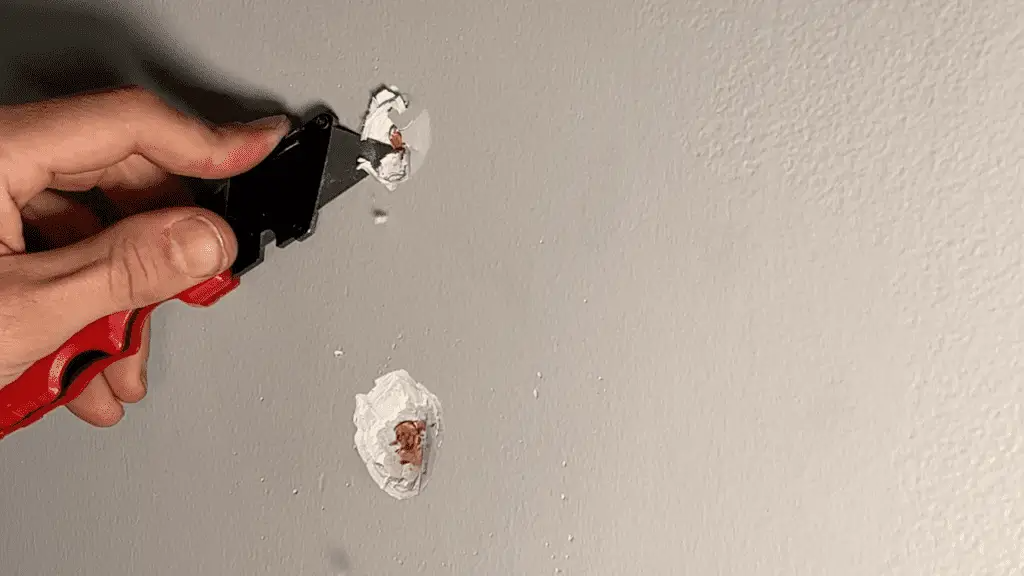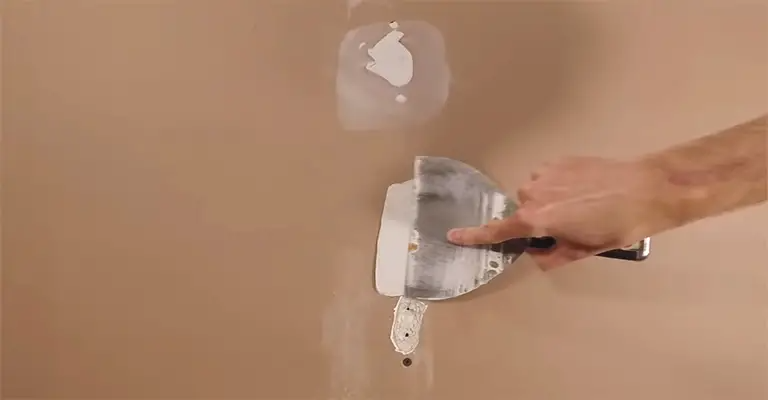Homeowners often encounter the frustration of drywall popped nails, those pesky protrusions that disrupt the smooth surface of your walls. Understanding the causes behind these nail pops is crucial for maintaining the integrity of your home. This guide delves into the common reasons for drywall popped nails and provides practical steps to effectively prevent and address this issue.
Understanding Drywall Popped Nails
Drywall popped nails are minor, rounded disruptions in your drywall, typically caused by the nails pushing through the paint and plasterboard. While they may seem like cosmetic flaws, these nail pops can signal underlying structural concerns related to your home’s foundation.
Uneven foundation settling is a primary culprit. Factors like soil expansion, contraction, improper water drainage, or poor construction can lead to the shifting of the foundation. As this happens, the wood framing loses its grip on the nails, causing them to protrude through the drywall. Recognizing these subtle signs is the first step in understanding the impact of drywall popped nails on your home’s stability.
Importance of Addressing the Issue
Addressing drywall popped nails is not just about aesthetics; it’s a crucial step in maintaining the overall health of your home. Ignoring these seemingly minor issues can lead to more severe structural problems. Timely intervention is essential to prevent complications such as sticking doors and windows, cracks in the drywall, uneven flooring, and gaps between walls and floors.
By understanding the importance of addressing drywall popped nails promptly, homeowners can ensure the safety and longevity of their property. This guide will walk you through preventive measures and practical steps to rectify the issue, offering insights into a comprehensive approach beyond surface-level solutions.
Causes of Drywall Popped Nails
Drywall-popped nails can be attributed to several factors, each significantly compromising the integrity of your home’s structure.

Uneven Foundation Settling
Impact of Soil Expansion and Contraction
Uneven foundation settling is a leading cause of drywall popped nails. When the soil around your home undergoes cycles of expansion and contraction due to changes in moisture levels, it exerts pressure on the foundation. This shifting foundation, in turn, disrupts the alignment of walls, causing nails to push through the drywall. Understanding the impact of soil dynamics on your foundation is crucial for addressing this root cause effectively.
Poor Water Drainage and Construction Issues
Poor water drainage exacerbates the effects of soil movement on foundation settling. Proper construction practices, such as adequate drainage systems, can lead to water pooling around the foundation. This prolonged exposure to moisture weakens the foundation’s stability, contributing to drywall popped nails. Comprehensive solutions involve addressing both drainage issues and foundational construction problems.
Inferior Construction Materials
Lower-Tier Drywall and Nails
Sometimes, using lower-tier construction materials, including subpar drywall and nails, increases the risk of nail pops. Seasonal variations and the natural aging of materials further amplify this risk. Investing in high-quality construction materials can significantly reduce the likelihood of encountering issues related to inferior materials.
Seasonal Variations and Aging
Seasonal variations, coupled with the aging of building materials, can contribute to the occurrence of drywall popped nails. Understanding how these factors impact the structural elements of your home allows you to implement preventive measures and choose materials that withstand the test of time.
Natural Drying Out
Contraction of Wood Framing in Newer Homes
In newer homes, the wood framing contracts as it dries over time. This natural drying-out process pressures the nails, leading to drywall-popped nails. Recognizing this phenomenon and taking proactive measures during construction can mitigate the impact of wood framing contraction on your home’s structural elements.
Fixing Drywall Popped Nails: Step-by-Step
A thorough and careful fixing process is essential to ensure a lasting solution when dealing with drywall popped nails. Follow these detailed steps to address the issue effectively:
1. Scrape the Nail Head Clear:
Begin by using a scraping tool to remove excess drywall around the popped nail or screw head. This step is crucial for accessing the protruding fastener.
2. Reposition the Popped Nail:
For screws, use a screw gun to loosen the popped screw. This makes it easier to screw it back into the wood frame behind the drywall. If dealing with a nail, carefully hammer it back into place, minimizing damage to the drywall.
3. Add Drywall Screws for Reinforcement:
To prevent recurrence, add screws approximately one inch above and below the original screw or nail. This provides additional security to the frame and replaces the original fastener. Properly securing the drywall ensures a more stable and durable fix.
4. Check for Flatness:
Run your hand over the repaired area to ensure that none of the screw heads are protruding. This step is crucial in verifying that the surface is even and that the fixing process is successful. Address any uneven areas promptly.
5. Patch the Holes:
Use a patching tool to apply patching material over the holes left by the popped nails. This material seals the holes and provides a smooth surface for painting. Ensure that the patching is applied evenly and covers the entire damaged area.
6. Sand the Patched Area:
Once the patching material has dried, use a medium-fine coarse sanding sponge to sand down the patched area. This step is essential for achieving an even surface that seamlessly blends with the rest of the wall. Thorough sanding ensures that the patch is not visible after painting.
7. Check for Evenness Again:
Run your hand over the sanded area to double-check for evenness. Confirm that the repaired section is smooth and integrates seamlessly with the surrounding wall. This step is crucial before proceeding to the final stages of painting.
8. Prime and Paint:
Once satisfied with the evenness of the repaired area, proceed to prime and paint the wall. Choose high-quality paint and ensure the color matches the existing wall for a cohesive finish. Proper priming and painting contribute to the overall aesthetic appeal of the repaired section.
Following these detailed steps, homeowners can effectively fix drywall popped nails, ensuring a professional-looking and long-lasting solution.
Preventing Drywall Popped Nails
Drywall-popped nails can be prevented by adopting a proactive approach that addresses critical aspects of your home’s foundation and construction. Here’s a detailed guide on how to avoid this common issue:

Holistic Approach to Addressing Foundation Issues
A holistic approach to addressing foundation issues is paramount in preventing drywall popped nails. Conducting regular inspections to identify early signs of foundation settling is crucial. Utilize professional services to assess the extent of settling and implement targeted solutions such as:
- Foundation Piers: Consider installing push piers that penetrate deeply into stable soil layers. These piers counteract external pressures, preventing the foundation from shifting.
- Helical Piers: For lighter structures, helical piers act like screws, securing the foundation to stable strata or bedrock. This method is effective in preventing future settling.
- Slab Piers: If your home has a slab foundation, sturdy steel piers underneath can bolster and raise the concrete, ensuring long-term stability.
Implementing these foundation solutions as preventive measures can significantly reduce the risk of uneven settling, addressing the root cause of drywall popped nails.
Importance of Quality Construction Materials
Quality construction materials are a critical factor in preventing drywall popped nails. Opt for premium-grade drywall and nails designed to withstand seasonal variations and aging. When undertaking construction or renovation projects, prioritize materials known for their durability and resistance to moisture. This preventive step ensures your home is fortified against the common causes of drywall popped nails.
Monitoring and Controlling Moisture Levels
Moisture control is integral to preventing drywall popped nails. Excess moisture can expedite foundation settling and compromise the stability of construction materials. Implement the following steps to monitor and control moisture levels:
- Efficient Drainage Systems: Ensure your home has well-designed drainage systems to redirect water away from the foundation. This prevents prolonged exposure to moisture.
- Sump Pumps: Install efficient sump pumps in areas prone to water accumulation. These pumps help in removing excess water, safeguarding your foundation.
- Vapor Barriers: Utilize vapor barriers in crawl spaces to prevent moisture from seeping into the foundation. This additional layer of protection contributes to the overall stability of your home.
Homeowners should prioritize a proactive stance to avoid complications, retain property value, ensure safety, and maintain cost-efficiency in home repairs. Choosing a professional repair service, like PatchitUP Drywall Repair, can provide personalized solutions tailored to your home’s unique requirements. With a detailed foundation assessment and effective techniques, such as using foundation piers and moisture control measures, comprehensive solutions are implemented to guarantee a stable and secure home. In essence, the journey from understanding the causes to implementing preventative measures and meticulous fixes leads to a home that looks beautiful and stands on a stable foundation. Taking proactive steps today ensures a safe, valuable, and aesthetically pleasing home for the future.
FAQ’s
Q: What are drywall popped nails, and why are they a concern for homeowners?
A: Drywall popped nails are minor protrusions in drywall caused by nails pushing through the paint and plasterboard. While they may seem cosmetic, they can signal underlying structural issues, potentially impacting the home’s foundation.
Q: What are the primary causes of drywall popped nails?
A: Uneven foundation settling, soil expansion and contraction, poor water drainage, construction issues, inferior materials, seasonal variations, aging, and wood framing contraction in newer homes are key factors contributing to drywall popped nails.
Q: Why is it important to address drywall popped nails promptly?
A: Timely intervention is crucial to prevent severe structural problems such as sticking doors/windows, cracks, uneven flooring, and gaps between walls and floors. Addressing these issues promptly ensures the safety and longevity of the property.
Q: How does uneven foundation settling contribute to drywall popped nails?
A: Uneven settling due to factors like soil movement exerts pressure on the foundation, causing the wood framing to lose grip on nails. This results in nails pushing through the drywall, leading to popped nails.
Q: Can the use of lower-tier construction materials increase the risk of drywall popped nails?
A: Yes, lower-tier drywall and nails, along with seasonal variations and aging, can increase the likelihood of encountering issues related to inferior materials. Investing in high-quality construction materials can reduce this risk.
Q: What steps can homeowners take to fix drywall popped nails?
A: Homeowners can follow a step-by-step process, including scraping the nail head clear, repositioning the popped nail or screw, adding drywall screws for reinforcement, checking for flatness, patching the holes, sanding the patched area, and finally, priming and painting.
Q: How can homeowners prevent drywall popped nails?
A: Adopting a holistic approach to address foundation issues, using quality construction materials, and monitoring and controlling moisture levels can help prevent drywall popped nails. Regular inspections, efficient drainage systems, and proper moisture control measures are essential preventive steps.


Leave a Reply